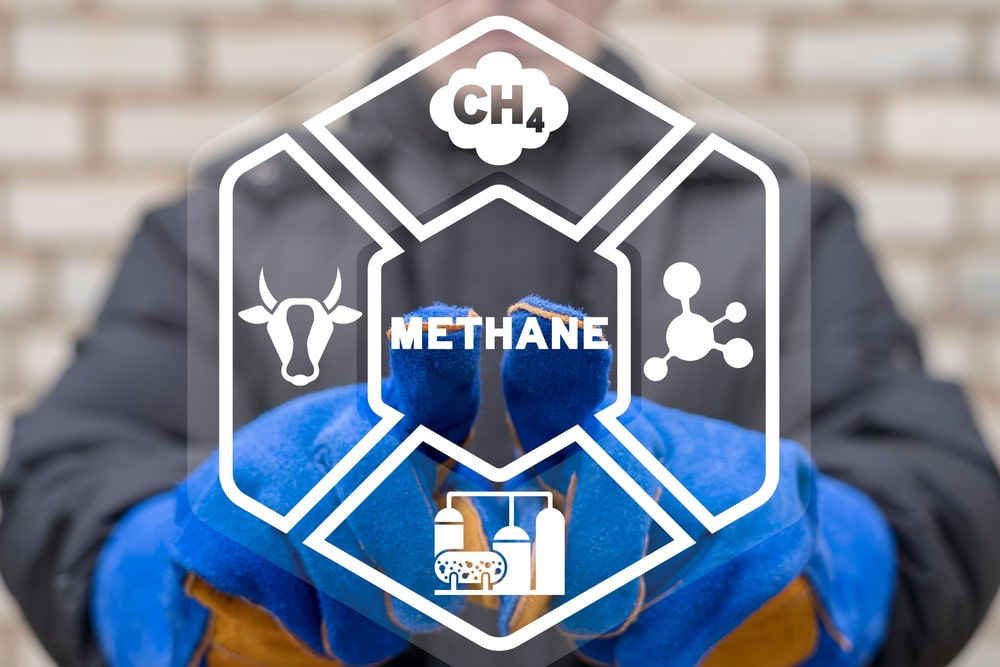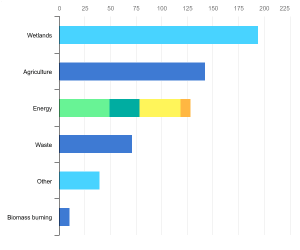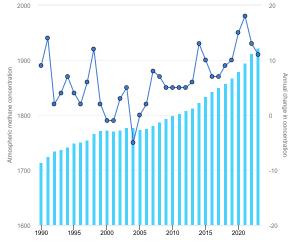According to the IEA, methane is responsible for around 30% of the rise in global temperatures since the Industrial Revolution. While carbon dioxide is mostly given importance in climate discussions, addressing methane removal is equally critical to achieving climate targets. At COP29, methane was much talked about with the launch of the 2024 report- An Eye on Methane.
The report revealed that the tools to cut methane emissions exist but a significant gap remains between commitments and action. The 2024 An Eye on Methane Report by the United Nations Environment Program’s (UNEP) International Methane Emissions Observatory (IMEO) emphasizes the urgency to close this gap.
Methane’s Alarming Impact: Short-Lived but Powerful
IEA reported that the latest Global Methane Budget estimated annual global methane emissions to be around 580 million tons (Mt). Of this, approximately 40% comes from natural sources, while 60% is due to human activity.
In 2023, the energy sector accounted for nearly 130 Mt of methane emissions, making it the second largest contributor after agriculture, which emitted around 145 Mt in 2017.
Methane stays in the atmosphere for about 12 years which is shorter than carbon dioxide’s lifespan of centuries. However, it absorbs far more energy during that time which makes it a potent greenhouse gas and a major cause of climate change. This is why, rapid and sustained reductions in methane emissions from the energy sector are crucial to keeping global warming within 1.5°C.
Additionally, methane contributes to air pollution by forming ground-level ozone, which is harmful to health. Leaks also pose explosion risks and other safety concerns. We can see that the impact of methane emissions is directly felt on air quality, climate, and health. Thus, cutting these harmful emissions is essential for improving both environmental and public health.
Sources of methane emissions, 2023
Source: IEA
Tracking Methane with Cutting-Edge Tools
UNEP’s IMEO is leading efforts to monitor and reduce methane emissions. It gathers data from several sources, including:
- Oil and Gas Methane Partnership 2.0 (OGMP 2.0): Industry reporting on emissions.
- Methane Alert and Response System (MARS): Satellite-based alerts for large methane leaks.
- Scientific Studies and National Inventories: Comprehensive research and emission records.
So far, MARS has flagged over 1,200 significant methane leaks to governments and companies. These alerts offer clear opportunities for action. However, only 1% of these notifications have received responses, revealing a significant lack of follow-up.
Satellites and AI: A Powerful Combination
MARS uses advanced satellite technology and artificial intelligence to detect methane emissions. This system helps governments and industries locate and address major leaks quickly. However, results would show up only when the leaks are fixed. This highlights the necessity for a “call to action”.
Despite these capabilities, very few emitters are using these tools. The report emphasized that companies and governments must engage more actively. The system is operational, but it needs collaboration to make a meaningful difference.
Changes in atmospheric methane concentrations, 1990-2023
Source: IEA
The Global Methane Pledge: Can the Champions Charge Ahead?
Global Methane Pledge (GMP) Champions include Canada, the European Union, the Federated States of Micronesia, Germany, Japan, Nigeria, and the United States.
These countries are urging other nations to implement active methane mitigation measures and integrate them into their Nationally Determined Contributions (NDCs). Notably, the NDCs if pertain to limiting warming, should explicitly include how methane reductions will help achieve climate targets. This step is vital to achieving the Global Methane Pledge’s target of reducing global methane emissions by 30% from 2020 levels by 2030.
Additionally, their agenda and progress are significant for the methane session at COP29.
The GMP Champions stresses the energy sector’s role in meeting methane reduction goals which also align with the G7’s commitment to cut methane emissions from fossil fuels by 75% by 2030. They also urge countries to adopt methane regulations and policies for oil and gas operations.
Lastly, as already explained before accurate data is critical for action. The Champions also call on governments to use the MARS and the private companies to join the (OGMP) 2.0 for better emissions tracking.
The global methane monitoring system is already ready to drive change. However, its success depends on turning data into action. For this, governments must enforce accountability by holding emitters responsible for addressing methane leaks and subsequently repairing them.
Significantly, the “An Eye on Methane” report is “a call to action” that pushes stakeholders to harness the methane data revolution. Methane’s harmful impact on global warming and human health made it a top priority at this year’s COP29 summit. And as the leaders said, the time to act is NOW!
Sources:



